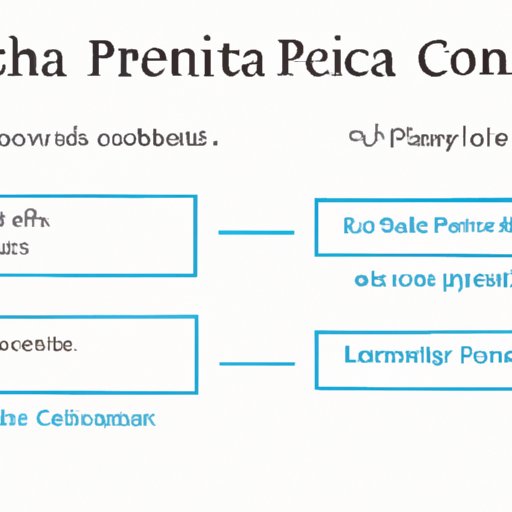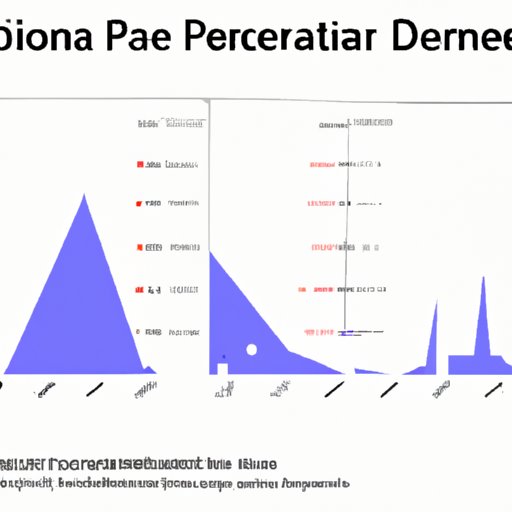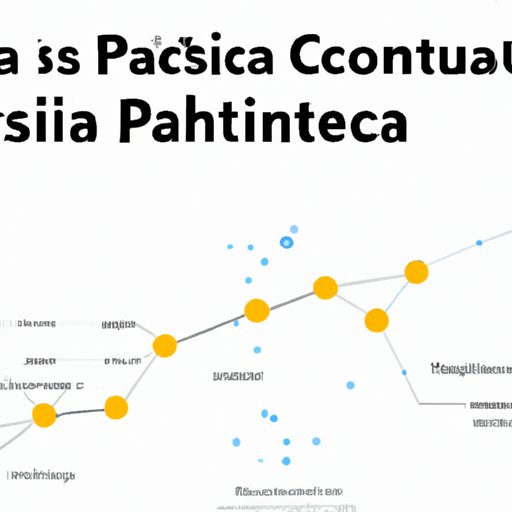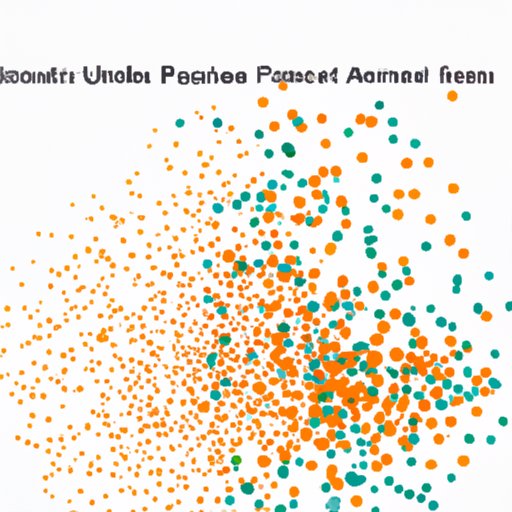Introduction
Principal component analysis (PCA) is a powerful technique used in data science and machine learning for understanding and analyzing complex datasets. It is a type of unsupervised learning that allows us to identify patterns in high-dimensional data and reduce noise and overfitting. In this article, we’ll explore what PCA is and how it can be used to make sense of complex datasets.
Understanding Principal Component Analysis (PCA): A Beginner’s Guide to Data Science
PCA is a statistical technique used to uncover patterns in high-dimensional data. It works by transforming the data into a new set of variables called principal components, which are uncorrelated and capture the maximum amount of variability in the data. This process helps reduce noise and overfitting, as well as improve model performance. Let’s look at what PCA is and how it works.
What is PCA?
PCA is a mathematical procedure used to simplify large datasets and transform them into a smaller number of variables. It is a type of unsupervised learning, meaning that it does not rely on labeled data or any prior knowledge. Instead, it uses an algorithm to analyze the data and identify patterns in the data that may not be immediately apparent.
How Does PCA Work?
PCA works by first identifying the strongest correlations between variables and then reducing the dimensionality of the data. This is done by calculating the covariance matrix of the data and then doing an eigendecomposition to find the eigenvectors and corresponding eigenvalues. These eigenvectors represent the principal components of the data and can be used to reduce the dimensionality of the data, while preserving the most important information.
Types of PCA
There are two main types of PCA: linear PCA and nonlinear PCA. Linear PCA is the most commonly used type and works by finding linear combinations of variables that explain the most variance in the data. Nonlinear PCA is more complex and works by finding nonlinear combinations of variables that explain the most variance in the data. Both methods can be used to reduce the dimensionality of the data and improve model performance.
Exploring the Power of PCA in Data Science and Machine Learning
PCA has become an essential tool in data science and machine learning due to its ability to uncover patterns in high-dimensional data. Here, we’ll explore the benefits and challenges of using PCA in data science and machine learning.
Benefits of Using PCA in Data Science and Machine Learning
The primary benefit of using PCA in data science and machine learning is its ability to reduce the dimensionality of the data. This can help improve model performance by removing unnecessary features and reducing noise and overfitting. Additionally, PCA can be used to identify patterns in high-dimensional data that would otherwise be difficult to detect.
Challenges of Using PCA in Data Science and Machine Learning
One of the biggest challenges of using PCA in data science and machine learning is that it can be computationally expensive. Additionally, PCA can be sensitive to outliers, which can lead to inaccurate results if the outliers are not handled properly.

How PCA Can Help You Make Sense of Complex Datasets
PCA can help you make sense of complex datasets by finding patterns in high-dimensional data and improving model performance. Here, we’ll explore how PCA can be used to uncover patterns in high-dimensional data, reduce noise and overfitting, and improve model performance.
Finding Patterns in High-Dimensional Data
One of the primary benefits of using PCA is its ability to uncover patterns in high-dimensional data. By transforming the data into a lower-dimensional space, PCA can help identify clusters and relationships between variables that would otherwise be difficult to detect. This can be especially useful for uncovering trends in large datasets.
Reducing Noise and Overfitting
Another benefit of using PCA is its ability to reduce noise and overfitting. By removing redundant and irrelevant variables, PCA can help improve model performance by reducing the complexity of the data. Additionally, PCA can help reduce the risk of overfitting by removing features that do not contribute to the model’s predictive power.
Improving Model Performance
Finally, PCA can help improve model performance by identifying the most important features in the dataset. By reducing the dimensionality of the data, PCA can help reduce the complexity of the model and improve its accuracy. This can be especially useful when dealing with large datasets.
Using PCA to Uncover Patterns in High-Dimensional Data
PCA can be used to uncover patterns in high-dimensional data that would otherwise be difficult to detect. Here, we’ll explore how PCA can be used to discover insights and improve visualization.
Applying PCA to Discover Insights
PCA can be used to uncover insights in high-dimensional data. By transforming the data into a lower-dimensional space, PCA can help identify clusters and relationships between variables that would otherwise be difficult to detect. Additionally, PCA can be used to reduce noise and overfitting, which can improve the accuracy of the model.
Using PCA to Improve Visualization
PCA can also be used to improve visualization. By reducing the dimensionality of the data, PCA can help maximize clarity and comprehension. Additionally, PCA can help enhance interpretability by allowing for more intuitive visualizations of complex datasets.
Applying PCA to Improve Model Performance and Reduce Overfitting
PCA can be used to improve model performance and reduce overfitting. Here, we’ll explore how PCA can be used to identify important variables and reduce dimensionality.
Identifying Important Variables
PCA can be used to identify important variables in a dataset. By reducing the dimensionality of the data, PCA can help identify the most relevant variables that contribute to the model’s predictive power. This can help reduce noise and overfitting, as well as improve model performance.
Reducing Dimensionality
PCA can also be used to reduce the dimensionality of the data. By transforming the data into a lower-dimensional space, PCA can help reduce the complexity of the model and improve its accuracy. Additionally, PCA can help reduce the risk of overfitting by removing features that do not contribute to the model’s predictive power.

PCA: Leveraging Dimensionality Reduction for Data Visualization
PCA can be used to leverage dimensionality reduction for data visualization. Here, we’ll explore how PCA can be used to maximize clarity and comprehension, as well as enhance interpretability.
Maximizing Clarity and Comprehension
By reducing the dimensionality of the data, PCA can help maximize clarity and comprehension. This can be especially useful for visualizing complex datasets and making sense of large amounts of data. Additionally, PCA can help identify clusters and relationships between variables that would otherwise be difficult to detect.
Enhancing Interpretability
PCA can also be used to enhance interpretability. By transforming the data into a lower-dimensional space, PCA can help create more intuitive visualizations that are easier to interpret. Additionally, PCA can help reduce noise and overfitting, which can improve the accuracy of the model.

Discovering Insights with PCA: A Comprehensive Guide to Data Science
PCA can be used to uncover insights in high-dimensional data. Here, we’ll explore how to structure your approach, select the right tools, and draw conclusions.
Structuring Your Approach
When using PCA to uncover insights in high-dimensional data, it is important to have a structured approach. This includes determining the goals of the analysis, selecting the appropriate tools, and analyzing the results. Additionally, it is important to consider the limitations of PCA and ensure that the data is prepared correctly before running the analysis.
Selecting the Right Tools
When using PCA to uncover insights in high-dimensional data, it is important to select the right tools. This includes choosing the appropriate algorithms and software packages that best fit the needs of the analysis. Additionally, it is important to consider the computational requirements of the analysis and ensure that the hardware is capable of running the analysis efficiently.
Drawing Conclusions
Once the analysis is complete, it is important to draw meaningful conclusions from the results. This includes interpreting the results, validating the findings, and communicating the results to stakeholders. Additionally, it is important to consider potential biases and ensure that the results are reliable and trustworthy.
Conclusion
In summary, PCA is a powerful technique used in data science and machine learning for uncovering patterns in high-dimensional data. It can be used to reduce the dimensionality of the data and improve model performance. Additionally, PCA can be used to uncover insights in high-dimensional data and improve visualization. By following a structured approach and selecting the right tools, PCA can help you make sense of complex datasets and uncover valuable insights.
Summary
Principal component analysis (PCA) is a powerful technique used in data science and machine learning for understanding and analyzing complex datasets. It is a type of unsupervised learning that allows us to identify patterns in high-dimensional data and reduce noise and overfitting. PCA can be used to uncover patterns in high-dimensional data, reduce noise and overfitting, and improve model performance. Additionally, PCA can be used to uncover insights in high-dimensional data and improve visualization. By following a structured approach and selecting the right tools, PCA can help you make sense of complex datasets and uncover valuable insights.
Further Reading
To learn more about PCA and how it can be used to uncover insights in high-dimensional data, check out these resources:
- A One-Stop Shop for Principal Component Analysis
- A Practical Guide to Principal Component Analysis (PCA) in Python
-
(Note: Is this article not meeting your expectations? Do you have knowledge or insights to share? Unlock new opportunities and expand your reach by joining our authors team. Click Registration to join us and share your expertise with our readers.)
